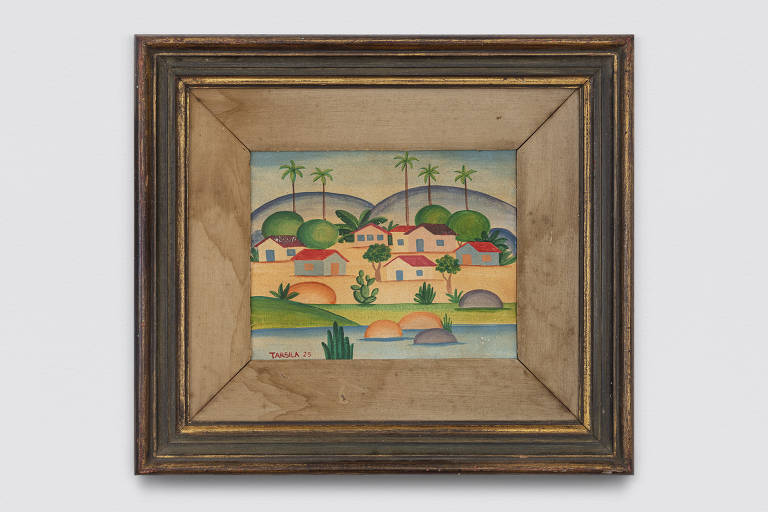The painting attributed to Tarsila do Amaral that caused controversy at SP-Arte, an art fair held in São Paulo in April, had its authenticity confirmed by the artist's heirs this Monday (19th), after four months of being considered fake by gallery owners and experts. Minutes after the confirmation, market agents who have already dealt with Tarsila’s paintings and specialists in the modernist’s work said they disagreed with the analysis method and insist the painting is fake.
At the same time, the law firm representing Tarsila’s estate sent an extrajudicial notice to some of the biggest specialists in the artist's work, including Aracy Amaral and Regina Teixeira de Barros, preventing them from issuing opinions on the painter’s work. Tarsila's great-great-niece, Paola Montenegro, who legally represents her great-great-aunt’s estate, confirmed the authorship of the painting "Paisagem 1925" (Landscape 1925), alongside expert Douglas Quintale and gallery owner Thomaz Pacheco. The dealer is now trying to sell the work, previously listed at R$ 16 million ($ 3 million), for R$ 60 million ($ 11 million). The expert reports that he verified the work based on a tripod of documentation, materiality — such as the chemical composition of the paints — and the aesthetics of Tarsila during that period. According to the examination, "Paisagem 1925," painted that same year, is part of Tarsila’s "Pau-Brasil" phase, the most valued period of her career. At that time, the painter lived in Paris and depicted emblematic scenes of Brazil.
The work stayed in Lebanon from 1976 to 2023. In December, it returned to Brazil with its owner, Moisés Mikhael Abou Jnaid. He reports that the painting was a wedding gift from his father to his mother in 1960 and left the country when the couple moved to Lebanon.
